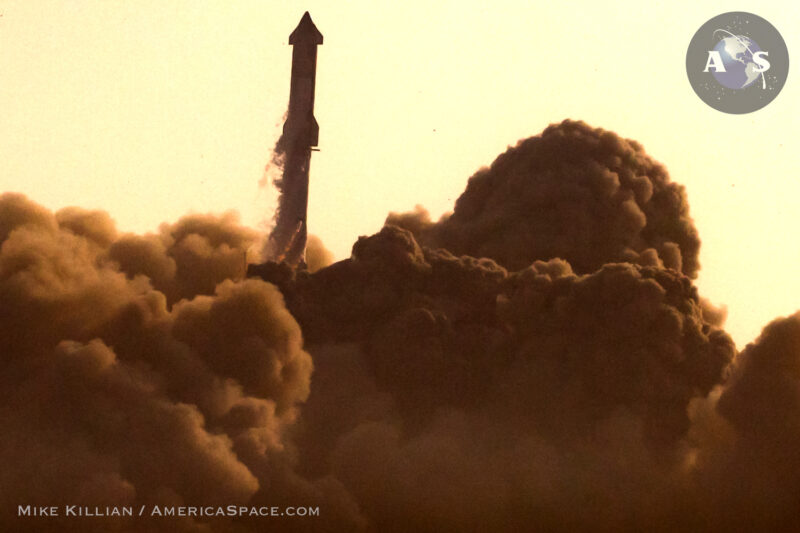
SpaceX launched the maiden voyage of their first Starship & Super Heavy rocket stack today, but failed to reach orbit. The issues started before the booster even left the pad, clearing the tower with at least 3 engines already out.
The spectacular lift-off of the near 400-ft vehicle rocked Boca Chica, Brownsville & South Padre Island in south Texas, at the border of Mexico where SpaceX conducts their testing on Starbase.
With no flame trench, the rocket’s 33 Raptor engines left a crater in the ground, & threw debris all over the surrounding area, destroying vehicles, infrastructure & our own remote cameras in the process (yes we know the risks). It’s very likely too, that debris was hitting the engines at liftoff, since again there was no flame trench.
See for yourself in this incredible view from Lab Padre:
At liftoff the largest and most powerful rocket ever made was already experiencing engine failures, but flew a good trajectory and reached an apogee of 39 km, even went through Max Q, before losing control and being blown up.
Elon took to Twitter as usual, declaring that a lot was learned for the next test launch, possibly in a few months.
The launch complex itself will absolutely also require more work too, not just the rocket. Millions of pounds of thrust left a crater under the launch mount & destroyed the mount itself. The launch also caused a grass fire, and a sand storm several miles away.
And it was loud too, louder than any launch I’ve ever very heard in 13 years of covering launches professionally full time. It almost sounds like it has SRBs, & is probably as close to a Saturn V as we will ever hear. It took a long time to clear the tower as well, and the sound of the rocket was still being heard 4 minutes after launch.
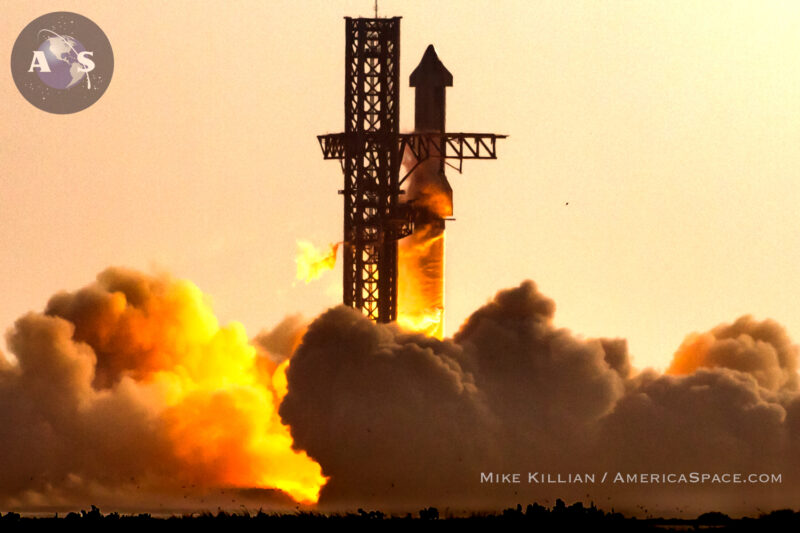
“With a test such as this, success is measured by how much we can learn, which will inform and improve the probability of success in the future as SpaceX rapidly advances development of Starship”, says SpaceX.
When fully operational, the Starship/Super Heavy will be capable of lifting up to 330,000 pounds (150,000 kilograms) of payload to low-Earth orbit in its fully reusable configuration. And if the booster is to be dumped, it can launch as much as 500,000 pounds (250,000 kilograms). Starship will be able to transport up to 100 crew too.
NASA and the politicians are all watching Starship closely, as the agency has contracted Starship to land the first Artemis crews on the moon later this decade.
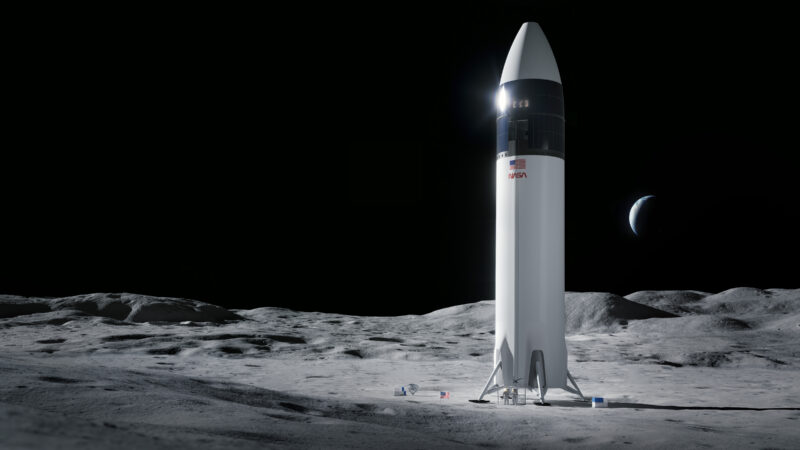
“Returning astronauts to the Moon to learn, live, and work is a bold endeavor. With multiple planned landers, from SpaceX and future partners, NASA will be better positioned to accomplish the missions of tomorrow: conducting more science on the surface of the Moon than ever before and preparing for crewed missions to Mars,” said NASA Administrator Bill Nelson.
NASA awarded SpaceX over $1 billion to develop its Starship human landing system to meet NASA’s requirements for long-term human exploration of the Moon under Artemis.
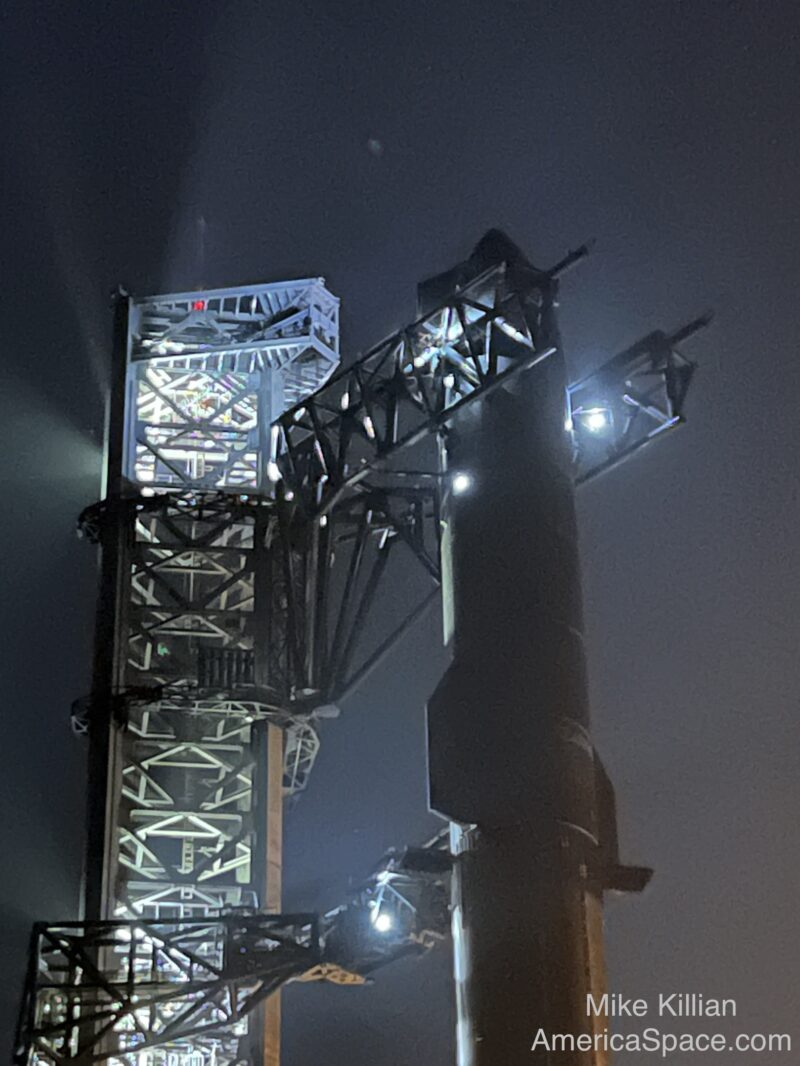
SpaceX will also have to fly an uncrewed demonstration mission to the Moon prior to Artemis III, before NASA will put their astronauts onboard for a moon landing.
Elon’s vision for Super Heavy & Starship is a rapid reusable heavy-lift deep-space booster & spacecraft that can fly enormous payloads of cargo & crews to & from the moon. Or Mars. Or Asteroids. Or anywhere else on Earth for that matter.
But first, they have a few kinks to work out.




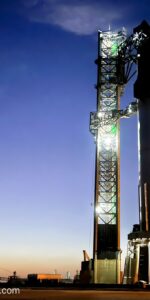
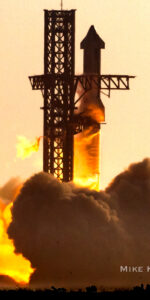
2 Comments
2 Pings & Trackbacks
Pingback:FAA Starship Investigation May Take Months - AmericaSpace
Pingback:SLS Mobile Launcher Rolls Out for Testing - AmericaSpace